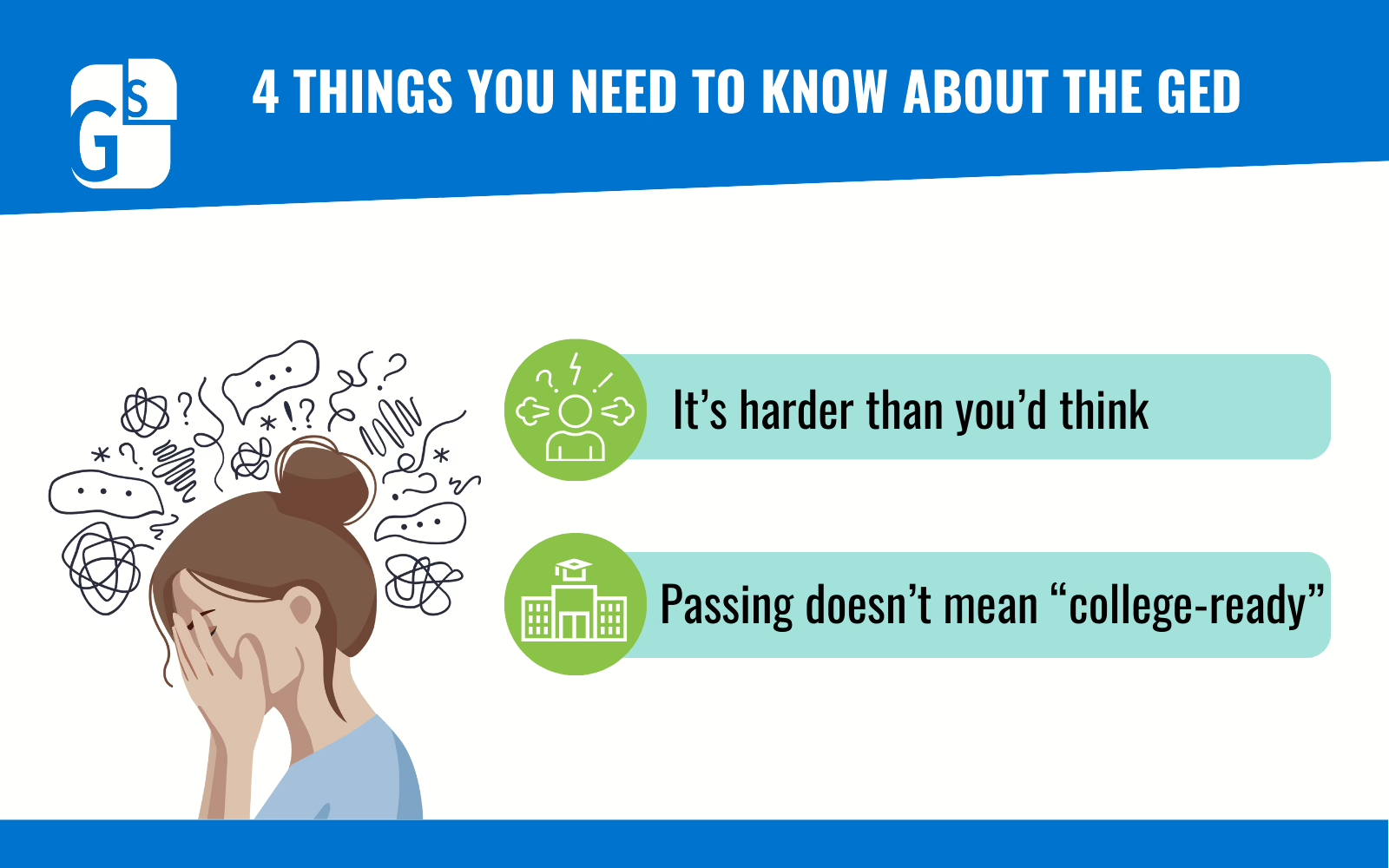Program Information
4 Things You Need to Know about the GED

For adults unable to complete traditional high school, the General Educational Development (GED) is an alternative available across the United States. While it is often considered a high school equivalency test, earning a high school diploma from programs like Grad Solutions can provide distinct advantages for college admissions and job opportunities.
If you’re a high school student who has studied ahead or had to drop out because of life issues, you might be considering getting a GED instead of a high school diploma. However, before you make the decision, you should be aware of these four things.

1. Is the GED test hard? Passing the GED might be harder than you think.
It’s not easier to get a GED than your high school diploma. The GED exam has become harder for people to pass, especially after the test format was redesigned in 2014. To pass the GED, you need to know the same information that you would have learned in high school, including subject areas like:
- Social studies
- Mathematical reasoning
- Reasoning through language arts
- Science
It takes a lot of motivation, critical thinking, and hard work to study for and get your GED. Utilizing GED practice questions and developing a consistent study plan, much like you would in 12th grade, is essential to ensure you are prepared for the test. The American Council on Education, which administers the GED, recommends taking the GED practice test to gauge your readiness. For most, it can take several months to pass the GED.
2. Passing doesn’t necessarily mean you are college-ready.
A minimum passing score on the GED test is 145 on each section, but 165 is considered by most higher education to be a “college-ready” total score. If you get less than a 145, it is likely that you will need to take remedial courses before you will be ready to take college courses. The more remedial classes you take in college, the longer and more expensive it will be. Statistically, only about 1 in 10 GED holders go on to earn a college degree.
It takes a lot of motivation and discipline to study for and get your GED. It is also a good idea to take the GED practice test. Once you know what level you are at, you will need to create a study plan. Then you need to study regularly, just like you would in high school. Once you are ready, you will need to pay for and make arrangements to take the GED test in person or online. The GED is an option but not an easy way to complete high school.

3. The GED testing service will cost you.
The GED exam can cost up to $160. It depends on your state, but most charge around the same. GED.com offers a “graduate package” that includes resources and materials to help test takers study and pass with a minimum score. This package costs about $200 but assumes that you will be self-motivated enough to read through all the materials, develop your study plan, take the time to regularly read and study the materials, and then take the test when ready.
For those that need extra help, GED.com offers GED+™, which they market as “Everything you need to earn your GED”. This is a premium service that costs over $100 per subject. If you decide to subscribe to the GED+™service, it will cost $476 to get this support for all four subjects, in addition to the cost of the exam. Keep in mind, that you’ll have to pay for retakes if you fail.
4. Age restrictions impact your ability to take the actual test.
Many states have a GED program. However, if you’re under 18, you might not be allowed to take the GED test yet. This is important to know because if you’re 15-16 and decide to drop out of school to take the GED, this approach may not be possible. Some states provide a GED option for 16 and 17-year-olds but have additional requirements that must be met.
We hope this information provides you with some additional considerations when deciding to go the GED route. The truth is, if at all possible, we recommend that you stay in school. However, we know that life happens and that people or circumstances may prevent you from succeeding in high school. Education is rarely a one-size-fits-all journey, so we offer a flexible alternative to becoming a high school graduate with Grad Solutions.

Get Your High School Diploma with Grad Solutions
If you already dropped out, know that there are alternatives to a GED that mean more than a high school equivalency credential. A high school diploma opens doors of opportunity that the GED cannot. From employer perception to college acceptance, a diploma is the gold standard. At Grad Solutions, we help young adults who have had to drop out of high school earn their diplomas. We provide free:
- Mentoring
- Tutoring
- Academic resources
- Flexible online courses
Our program allows students to finish high school online when they have time. If you would like to know more, feel free to call us at 480-689-5999, contact us, or enroll online! We hope to hear from you!
Sources
GED vs HIGH SCHOOL DIPLOMA | Should I drop out of high school in 2020? – Michelle Revisted
GED Passing Rates Rise, But Fewer Students Take Exam After Redesign – Catherine Gewertz